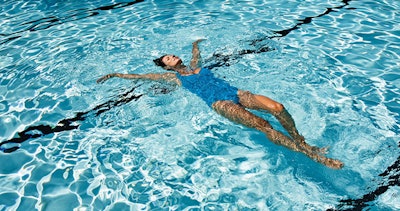
The fact that humans float in water is at the heart of why pools and spas exist in the first place. Yet, for as critical as buoyancy may be, do we really understand how it works? For most, including those of us in the pool and spa industry, the honest answer is we probably don’t, at least not with any scientific specificity.
In the spirit of sharing basic information about aquatics and the science behind it, here’s a brief primer on buoyancy.
For starters, buoyancy is critical in the work of anyone concerned with bodies or objects moving in a liquid. In pools and spas, waterparks and other aquatic facilities, engineers, physical therapists, swim coaches, clinical researchers and a host of manufacturers necessarily work with the mathematics and mechanics of buoyancy.
Anyone who has submerged all or part of their body in a body of water of any type has experienced the effects of buoyancy.
The concept of buoyancy was discovered by Archimedes, a Greek philosopher from third century B.C. According to the famous “Eureka” story, Archimedes first noticed that the water in a bathtub rose when he sat down in it. That led to a number of experiments, which he later explained in the “Archimedes Principle.” In a nutshell he observed that an object immersed in a fluid is buoyed up by a force equal to the weight of the fluid it displaces.
If an object displaces an amount of water that weighs more than it does, it floats. If an object displaces an amount of water that weighs less than it does, the object sinks.
Buoyancy is related to the density, volume and shape of the immersed body. In humans, density and volume are influenced by several factors, including lung capacity and relative proportions of bone, muscle, fat and blood; all impact buoyancy of the human body. Bones and muscle are heavier than water, while blood, fat and lungs filled with air are lighter than water.
On average, the human body has a buoyancy of .98 in water; meaning most of us are just barely lighter than water and therefore able to float.
A big part of why we enjoy going in the water, and why it’s such an effective therapeutic environment, is that the more of your body that is submerged in the water, the lighter you, in effect, become. At waist level we experience only 40-to-50 percent of our body’s weight on land. Chest-deep water reduces weight 25-30 percent and 10 percent when immersed to the base of the neck.
Salinity of water also impacts buoyancy simply because saline water weighs more than does fresh water. On average ocean water is 2.5 percent heavier than fresh water.
All in all, the science of buoyancy is truly uplifting!












































